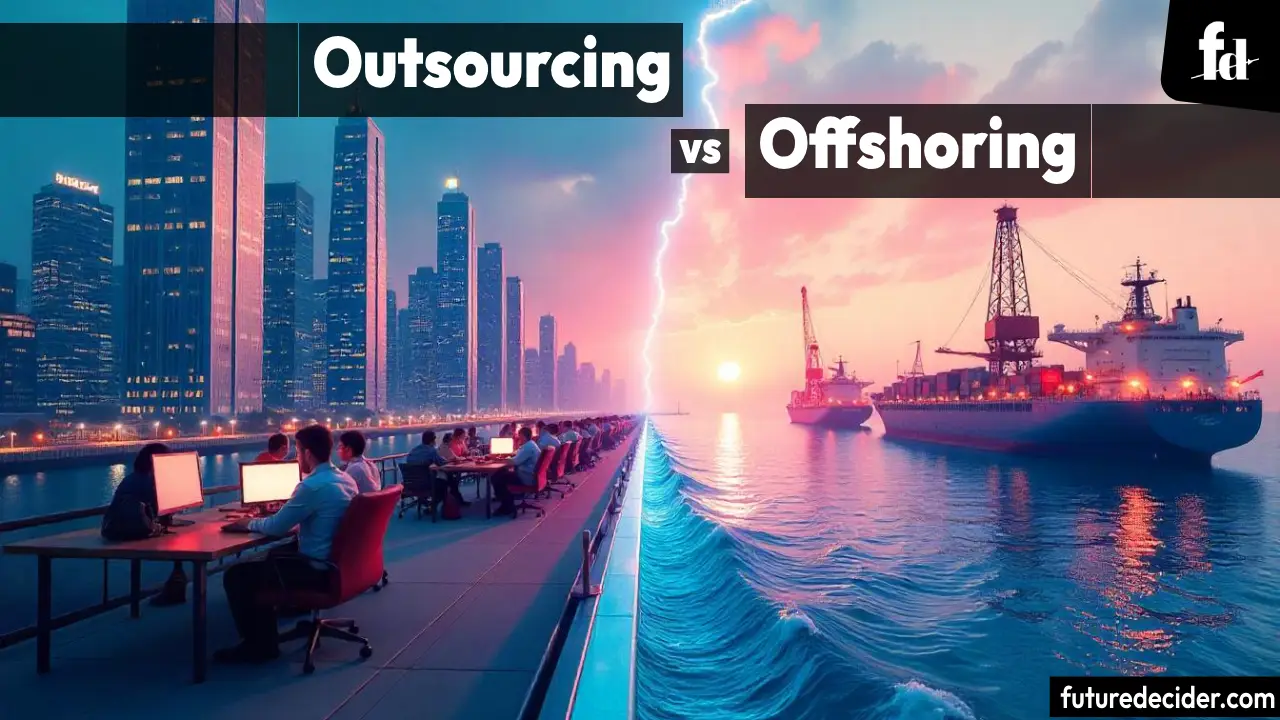| 1 | Definition | Relocating business operations to another country | Delegating tasks to an external third-party vendor |
| 2 | Ownership | Company retains full ownership and control | Tasks are handled by an independent service provider |
| 3 | Location | Always international | Can be domestic or international |
| 4 | Control | High internal control over processes | Limited control, depending on the vendor |
| 5 | Cost Savings | Achieved through lower labor and production costs abroad | Achieved through vendor efficiencies and cost arbitrage |
| 6 | Purpose | Mainly for cost reduction and global expansion | Mainly for accessing expertise or saving time and resources |
| 7 | Setup Complexity | Requires infrastructure setup in foreign countries | Minimal setup, quick implementation |
| 8 | Duration | Often long-term strategic investment | Can be short-term or project-based |
| 9 | Examples | Apple’s manufacturing in China | Hiring a firm to handle payroll or customer support |
| 10 | Employee Base | Uses company’s own hired staff overseas | Uses vendor’s employees |
| 11 | Recruitment Responsibility | Managed internally by the company | Managed by the outsourcing vendor |
| 12 | Process Standardization | Consistent with in-house operations | May vary depending on the vendor’s methods |
| 13 | Data Security | Easier to control internally | Higher risk depending on vendor policies |
| 14 | Scalability | Moderate; depends on offshore capacity | High; easily scalable with vendor support |
| 15 | Flexibility | Less flexible due to fixed investments | Highly flexible and adaptable |
| 16 | Cultural Integration | Involves managing internal teams across cultures | Less integration, handled externally |
| 17 | Training Requirements | Training is the company’s responsibility | Vendor handles staff training |
| 18 | Intellectual Property (IP) Risks | Lower; company controls operations | Higher; depends on vendor agreements |
| 19 | Communication | Easier within company structure, but across time zones | May face coordination challenges with third parties |
| 20 | Speed of Execution | Can be slower initially due to setup | Faster execution via experienced vendors |
| 21 | Infrastructure Cost | High; needs investment in overseas facilities | Low; vendor provides infrastructure |
| 22 | Vendor Dependence | Not dependent on external parties | High dependency on third-party vendors |
| 23 | Talent Acquisition | Access to global talent pools | Access to vendor’s specialized talent |
| 24 | Risk Management | Risks include political, legal, and currency issues abroad | Risks include vendor reliability and service quality |
| 25 | Focus on Core Activities | Enables focus by shifting secondary operations offshore | Enables focus by offloading specific tasks to vendors |
| 26 | Regulatory Compliance | Must comply with foreign regulations | Vendor often handles compliance for their part |
| 27 | Business Continuity | Depends on offshore location stability | Depends on vendor’s continuity planning |
| 28 | Customization | High; tailored to company’s internal needs | Varies; may be limited by vendor offerings |
| 29 | Operational Transparency | High; internal teams provide visibility | Lower; vendor may limit transparency |
| 30 | Industry Fit | Popular in manufacturing, IT development, R&D | Common in customer service, HR, legal, and marketing |


